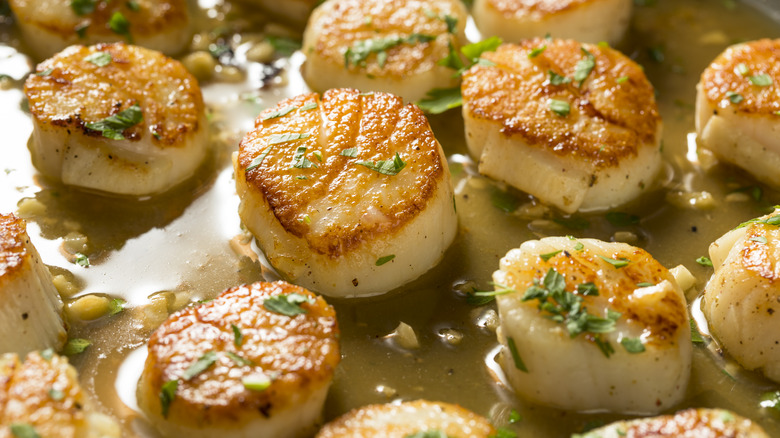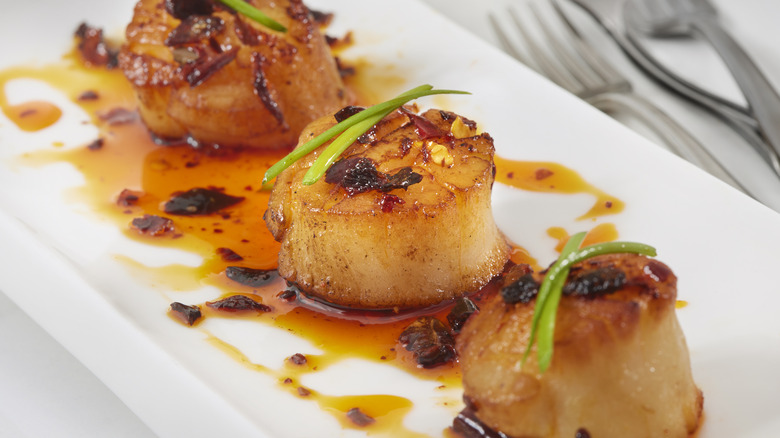The Reason Your Scallops Aren't Browning And How To Fix It
When scallops are cooked right, they're melt-in-your-mouth buttery with delectably crisp edges. When they're cooked wrong, though, they have the rubbery, moist texture of something that was just plucked from the sea. To be fair, they were. The part of scallops that we eat is actually a mollusk's adductor muscle, which they use to open and close their shells in order to swim. But they aren't meant to maintain their underwater consistency when being eaten — and if they are, you probably forgot to dry them before you placed them in your pan.
When amino acids and reducing sugars meet in a hot pan, a chemical reaction known as the Maillard reaction occurs, browning certain foods and changing their flavor. However, if there's too much moisture in your pan, your scallops will be steamed rather than pan-seared, leaving you without crisp, brown edges. Restaurants generally avoid this, and it's hard not to compare your worst scallops to theirs. But remember, they have a leg up with high-powered industrial burners that are able to quickly dispel extra moisture. If you're determined to perfect your at-home seared scallop recipe, there are a few simple ways to do so: Buy the right scallops, dry them well, and salt them to draw excess moisture to the surface.
Selecting and preparing the perfect scallops
There are two main ways sea scallops are packaged in the grocery store: dry and wet. You want the dry ones, which are considered fresher. Wet scallops are preserved with a sodium tripolyphosphate solution and retain a lot more water weight that's released when cooking, making those browned edges much harder to achieve. These preservatives can also affect the flavor, resulting in a slight chemical taste, rather than the freshly-shucked flavor of dry scallops.
When you're ready to prepare your scallops, you want to get out as much moisture as you can. First, season them with salt, and leave them on a paper towel-covered pan in the fridge for about 10 minutes. This will draw moisture to the surface of the mollusks, which you can then wipe away with a second paper towel. If they're still wet, leave them for longer, until you're confident they're ready to cook.
Upon cooking, make sure you space out the scallops in your pan — keeping them too close risks steaming. Also, set your pan at a high temperature — you want those caramelized edges, after all. If you're too tired after all of this to take the time to slowly sear them in a pan? Throw them in the oven instead.

